#māori-fying tolkien
Text
There was a post going around for a while about how kana means chicken in Finnish, making Kanafinwe = chicken Finwe. The thing is, a lot of Quenya names have te reo Māori meanings or can have funny meanings when transliterated into te reo. I've made a little list.
The most important thing to know is that 'wh' is pronounced 'f' in most dialects. Also, I took several liberties with the transliterations - when there were multiple options, I picked the one whose meaning I liked the best.
Translations
Maitimo: Māītimo means sour gardening tool. (Māī = sour, timo = a tool used to dig up sweet potatoes.) But if you're willing to mess around with the vowel sounds a little ... Māī-iti-mau [my-ee-tee-mo]* = to be a little sour to be captured.
*'au' is usually pronounced like the o in no.
Kanafinwe: Kana = wild stare / to stare wildly, making him Wild Stare Finwe.
Kano: either 1) colour or 2) bean.
Turukano: tūru means chair, so Tūrukano means chair bean
Ingo means desire, yearning, wanting. (Ingoldo becomes Ingoroto, a desire/yearning within.)
Amarie: Amārie = of peace, tranquility.
Arafinwe: ara means the waters breaking in childbirth. It also means path, but the first option is funnier.
Arakano: path bean
Angamaite: anga = to face, māī = sour, and tē = fart.
Curufinwe: Kuru has a lot of meanings including to hit/punch, to be tired, a piece of greenstone jewelry, or a mallet. So I guess that makes his name Tired Finwe, Ornamental Finwe, Mallet Finwe, or Punch Finwe. The last one would be in the imperative, making it a command.
Moringotto: we have to take out one of the t's to make this Mōringoto. It means either 1) intense unimportant person or 2) unimportant person to penetrate.
Transliterations
Feanaro: The best transliteration would be Wheanaro, which is pronounced the same as in Quenya. But my favourite interpretation is Whaea-ngaro; mother lost/missing.
(Edited to add that 'ng' is a soft sound pronounced like in sing. I'm cheating a bit here, because it's actually the equivalent of the Quenya ñ, not n like in Feanaro.)
Nelyo: We don't typically have l or y sounds. My preferred option for this would be Ngērō, meaning to scream inside.
Nelyafinwe -> Neriawhine or Nerawhine. Nera can mean nail (as in a metal nail) or to nail. Whine [fee-neh] isn't a word in most dialects, but in some very small areas it's the word for woman/women.* (In most areas the word is wahine.) So uhhhhh interpret that as you will, but this may be the single most ironic name on the list.
*Another possible transliteration of Finwe would be Whinewē, meaning woman liquid. This is physically painful to me so I'm sticking with Whine.
Findekano: In the same vein, Whinekano means bean woman or woman bean. If you prefer Whine-te-kano or Whine-tē-kano, the former means Woman The Beans and the latter means women fart beans.
Turko is Tūrukau: chair cow / nothing but a chair.
Makalaure could become Makarōre. Maka = to throw/fling and rōre = lord, making the full name Yeet Lord. A prophetic mother name.
Tyelkormo would become Terekomo. Tere= swift/fast. Komo... um. This is mostly used to describe putting on clothes. But it can also mean to thrust or insert. So basically the same as the Quenya
Moryo = Mōriau, a firm unimportant person / a howling unimportant person.
Curvo: if written as Kuruwau, in certain dialects it would mean hit me.
Pityo would be Pitiau: defeated smoke/mist.
Findarato: rātō means western, so Whinerātō = western woman.
There are also names that are pronounced the same in te reo Māori as they are in Quenya but have no Māori meaning, e.g. Anaire or Curumo.
Take this whole thing with a pinch of salt, because obviously we don't usually make word-for-word translations of transliterated names. Like I said, I've also taken some liberties with the transliterations. But to the best of my knowledge, all of these are accurate translations.
It's the House of Finwe uwu smol beans
#silmarillion#quenya#my nonsense#māori-fying tolkien#don't mind me mushing together different dialects
193 notes
·
View notes
Text
Melian and her Descendants as Native Aotearoa Birds
For day 4 @tolkienofcolourweek
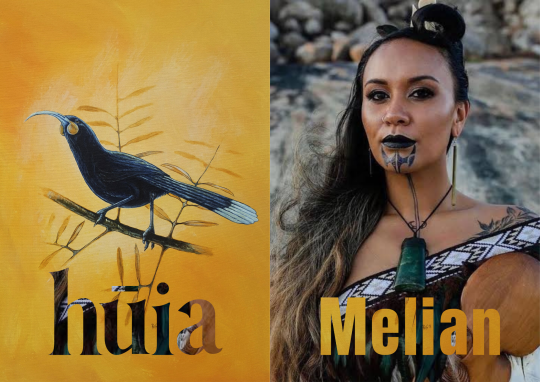
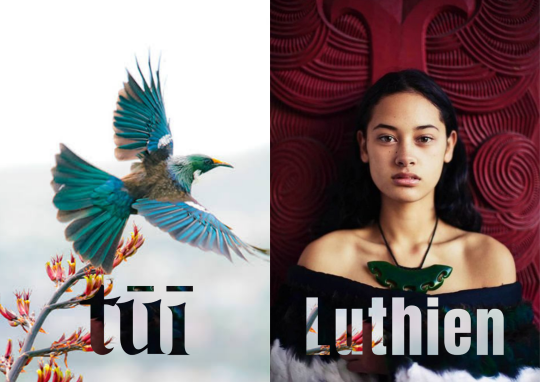



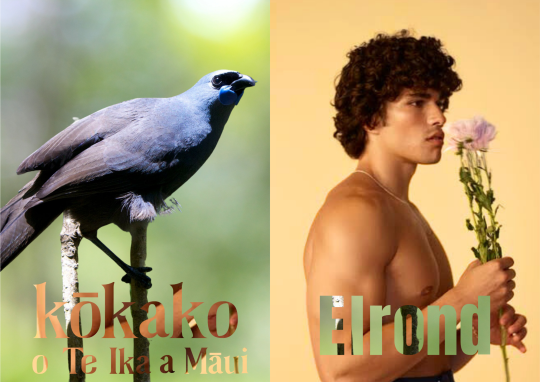


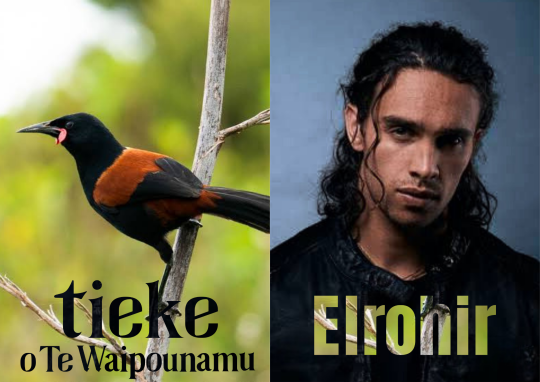

A detailed image description is at the bottom of this post but I've listed the characters and their matching birds below.
Melian: hūia. A sacred bird, often considered to be one of the most beautiful birds in Aotearoa. Their feathers were traditionally only worn by people of high status.
Hūia were forest songbirds who paired for life and were utterly devoted to their partners. The pairs would fly and hunt together, caressing each other with their bills, singing duets back and forth. Often when a hūia died, its partner would die of grief a few days later (typically due to failing to eat or drink).
There was a sharp decline in the numbers of hūia after the arrival of European settlers in the 1840s. By the early 20th century, they had disappeared from our forests forever.
Lúthien: tūī. The most talented of our songbirds, a stunningly beautiful creature with iridescent blue-black feathers. Their double voicebox allows them to mimic almost any sound, including human speech. They often sing all day long.
Tūī are messengers to the gods. In Māori culture we might compliment a singer by saying that they have korokoro tūī, the throat of a tūī.
Also I'm feral about this quote:
Farmer and ornithologist Herbert Guthrie-Smith, writing in the early 20th century, observed of a female tui singing on the nest (tui are the only bird in the world to sing on the nest): “We were close to her, yet she sang as if her song could have no ending, as if the world was too full of the ecstasy of life for wrong and rapine to exist. The sun was shining above the flowing river, the leaves green, of every shape and shade; her great love had cast out fear.”
(Source)
Díor: kōtare, aka the sacred kingfisher. (Yes, okay, this is partially a joke about Dior being a sacred king.) Although kōtare are native to Aotearoa, they're also found in other countries. Most Eastern Polynesian cultures, including many Māori iwi, believe that kōtare have power over the ocean and waves.
Kōtare can sit motionless for hours while waiting for their prey, watching with perfect stillness. For this reason, a person who is alertly watching for enemies is sometimes compared to a kōtare.
Elured and Elurin: tara iti, aka fairy terns.
For Māori, terns in general are associated with people of high status. Tara iti are the smallest species of tern in Aotearoa, weighing in at about 70 grams (or 2.5 ounces). They're also our rarest breeding bird. Sadly, there are only about 40 individuals left.
Elwing: kōtuku - I expanded on this in another post
Elrond and Elros: North Island kōkako and South Island kōkako (respectively). Kōkako are blue-grey songbirds who often have a similar call to tūī, although with a slightly less extensive range of sounds. They love to sing duets; in fact, they sing the longest known duets of any bird in the world.
The North Island and South Island kōkakō are closely related but distinct sub-species. Although the North Island kōkako has been the subject of a successful conservation campaign, the South Island kōkako is considered possibly extinct. (The last two reliable sightings were in 2007 and 1967.) However, some people who walk the remote tracks of the South Island swear they've heard it singing.
Elladan and Elrohir: tīeke, aka the North and South Island saddlebacks. The two species are very difficult to tell apart for all but the most trained eyes. They're close relatives of kōkako and hūia.
Tīeke are notoriously fearless. In Māori culture, they're guardians and guides.
Arwen: Chatham Islands tūī. While these birds look extremely alike to mainland tūī, they sing a very different song.
(Since this bird is from the Chatham Islands, the Arwen faceclaim is a Moriori woman. Moriori are the indigenous people of the Chathams.)
Image description below cut due to length.
A series of paired images. Each pair has one bird and one faceclaim. All of the faceclaims, except for Arwen, are Māori.
1: Hūia and Melian. The hūia is a black bird with an orange wattle, long curved beak, and white at the end of its tail feathers. Melian is a dignified woman with light brown skin, brown hair, and a traditional chin tattoo. She wears traditional clothing and a pounamu (greenstone) ornament around her neck.
2: tūī and Luthien. The tūī is in flight. The light has caught its wings and tail feathers, making them look a vivid blue. Luthien is a light-skinned (but distinctly Māori) woman with long dark hair. She wears a black dress and a pounamu necklace.
3: a kōtare and Dior. The kōtare is a blue/black bird with a white neck and underside. It's in flight, carrying something in its mouth. Dior has dark brown skin and facial tattoos that mark him as someone of high rank. He wears a carved bone ornament in his hair, a pounamu necklace, and a traditional feather cloak.
4: tara iti and Elured and Elurin. The tara iti is visible from behind, its white wings spread, either landing or taking off. Elured and Elurin are infants swaddled in blankets side by side.
5: Kōtuku and Elwing. The kōtuku is a gorgeous white bird with a long neck and stilt-like legs. This one standing on a tuft of grass surrounded by water, looking down at its reflection. Elwing is a light-skinned, dark haired pregnant woman wearing a white cloak and cradling her stomach.
6: North Island kōkako (kōkako o Te Ika a Māui) and Elrond. The kōkako is a blue-grey bird with a black beak and blue wattle. The Elromd faceclaim is Alex Aiono (Ngati Porou, Samoa), a man with light brown skin and dark curly hair. In this photo he's shirtless, holding a flower and facing the righthand side of the image.
7: South Island kōkako (kōkako o Te Waipounamu) and Elros. The kōkako looks very similar to the bird above except for its orange wattle. The Elros faceclaim is also Alex Aiono, but in this image he's standing on a beach in front of the sea, smiling.
8: North Island saddleback (tīeke o Te Ika a Māui) and Elladan. The tīeke is a medium sized bird with a red wattle and mixed black/red-orange plumage. My Elladan faceclaim is Jordi Webber (Te Atiawa, Ngāti Toa, Te Arawa, Ngāti Raukawa, Ngāti Maniapoto). He's a young man with pale brown skin, wavy black hair, and grey eyes.
9: South Island saddleback (tīeke o Te Waipounamu) and Elrohir. He is also represented by Jordi Webber.
10: Chatham Islands tūī (tūī o Rēkohu) and Arwen. This tūī is sitting on a flax plant, but it looks very similar to the tūī photo from earlier. It has blue-black plumage, a white tuft at its throat and orange pollen on its head. The Arwen faceclaim is a smiling Moriori woman in front of trees. She has long brown hair, light brown skin and a white dress.]
#melian#luthien#dior#elured#elurin#elwing#elrond#elros#elladan#elrohir#arwen#silmarillion#tocweek2023#māori-fying tolkien#mine#long post#thank u to Toi for showing me how to do the letters thing#i very definitely didn’t overdo it in the slightest
262 notes
·
View notes
Text
Te Hōkioi, and Speculation on the Dietary Habits of the Great Eagles
He Hōkioi, i runga, he Hōkioi, i runga, hū.
(The great eagle, from above, made a booming call)
Kei te āputa koe, nā, o te rangi, e noho ana,
(In the open space, there, in the sky, it dwells)
Te hoa moenga, nō whatitiri mātakataka;
(Death's companion, with crashing thunder)
Hei aha, tērā, e tararua mārire, ona hikumaro?
(Why, then, do its tail feathers no longer split the quiet in two?)
Rua maro tonu, ona hakikau;
(Two fathoms wide, its wings;)
E huhū nei, i runga te rangi,
(It called, above in the sky)
Hōkioi, Hōkioi.
(The sound: hōkioi, hōkioi.)
- poem/chant by the great Ngāti Toa chief Te Rauparaha
For @tolkienofcolourweek, I'm spending seven days bringing Māoritanga and mātauranga Māori to the world of Tolkien! Starting off on day 1 with: what did Manwë's Eagles eat?
Such massive animals, especially flying ones, would have required a huge caloric intake. We have little evidence about what potential prey may have existed in Beleriand and Middle Earth. The Hobbit mentions them eating sheep, and it seems likely that they would hunt other large animals, such as deer or bison. But there's nothing in our modern world that compares to or fills an ecological niche like Manwë's Eagles.
This is where I draw on Māori oral history of the largest eagles to ever live.
In English they're called Haast's Eagles, but in Māori there are several names. Probably the most well-known of the Māori names is pouakai/poukai, but my people called them hōkioi.
They were massive, weighing as much as 17.8 kg (about 39 lbs) and with wingspans as large as 3 metres (about 10ft). Their feet and claws were the size of modern day tigers, capable of punching through bone. They hunted prey more than fifteen times their own size.
(Granted, the eagles of Manwë are much larger than even the hōkioi! Still, it's similar enough for me to draw inspiration.)


[Left image: an artist's rendition of a hōkioi perched on a rock. Right image: an artist's rendition of a hōkioi attacking the neck of a giant flightless bird.]
The hōkioi's primary prey was the moa, large flightless birds similar to ostriches or emus. With no large land mammals on the islands, hōkioi were the apex predators.
Then, circa 900 CE, large mammals came to Aotearoa for the first time. They also preyed on moa, reducing the hōkioi's food supply. So perhaps it was natural that the hōkioi began to hunt these mammals as new prey.
Unfortunately, those mammals were us.


[Left image: an artist's rendition of a hōkioi attacking a Māori man who holds a spear. Right image: an artist's rendition of a child running from a hōkioi.]
Our stories of the hōkioi, or pouakai, tell of giant birds that could swoop down from the sky to kill and eat even strong warriors. They were also known to carry off small children.
I'm not saying that the eagles of Manwë ate elves or humans. (I think they were probably given firm instructions not to!) It would make sense for them to prey on orcs and other creatures of Morgoth, though. And there's one other group who we know were hunted like animals in Beleriand, due to... misunderstandings. A group who the Eagles may not have initially recognized as sentient creatures. A group who would have been an ideal size to pick up and carry off as a snack.
I'm just saying, I think there may have been multiple reasons that dwarves chose to live underground.
-
(Sources for further information about te hōkioi:
The man-killer that fell from the sky
NZ Birds: Haast's Eagle)
#silmarillion#silm meta#the giant eagles#tocweek2023#māori-fying tolkien#mine#yes this is a little bit cracky#i fully acknowledge that#so please don't be weird in my notes and inbox#(also i SWEAR i haven't forgotten about my wips and i promise i'm working on them!)
79 notes
·
View notes
Text
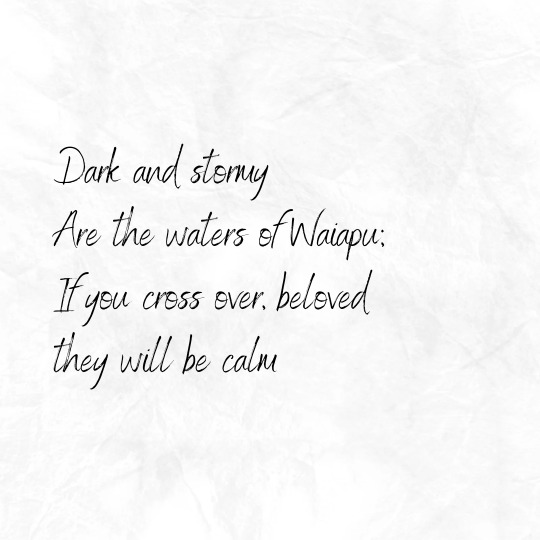
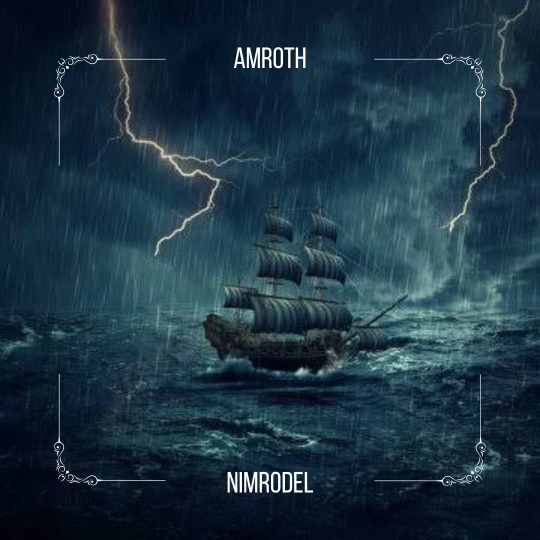





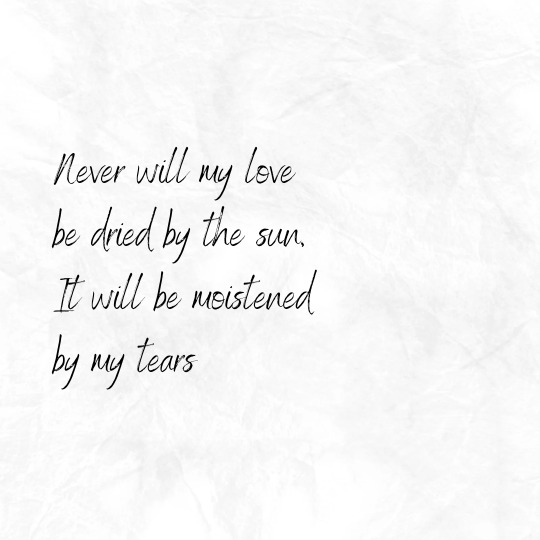

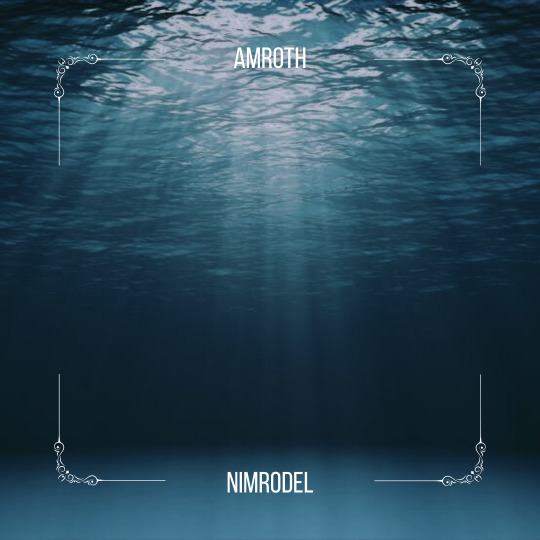
The storm fell upon the coasts of Gondor just as dawn was peering through the flying clouds; but when Amroth woke the ship was already far from land.
Crying aloud in despair Nimrodel! he leapt into the sea and swam towards the fading shore. The mariners with their Elvish sight for a long time could see him battling with the waves, until the rising sun gleamed through the clouds and far off lit his bright hair like a spark of gold. No eyes of Elves or Men ever saw him again in Middle-earth.
- Unfinished Tales
[Image description: ten square panels. Half of them are black text on a white paper background, and the other half are images in shades of blue. The blue-tinted images have a square frame and the words "Amroth" and "Nimrodel".
"Dark and stormy / Are the waters of Waiapu; / If you cross over, beloved / they will be calm"
A ship in a thunderstorm.
A Māori man and woman pressing their foreheads together. Behind them are trees and a stream.
"Oh girl / return to me, / I could die / of love for you"
"My pen is shattered / I have no more paper / But my love / is still steadfast"
An underwater photo of hands reaching towards the surface, bubbles streaming up
A woman ankle-deep in the surf, looking out at the sea
"Never will my love / be dried by the sun, / It will be moistened / by my tears"
"Oh girl / return to me, / I will die / for love of you"]
Nimrodel and Amroth for day 3 of @tolkienofcolourweek
The words are an English translation of some of the verses and the chorus of Pōkarekare Ana, which is probably the most famous of all te reo Māori songs. You can read the full lyrics (in both Maori and English) and listen to it here.
A brief note: the link above translates "ka mate ahau / i te aroha e" as "I could die / of love for you", but it can also be translated as "I will die / for love of you".
40 notes
·
View notes
Text
The Nature of Elwing
For Day 2 of @tolkienofcolourweek, where I continue to Māori-fy Tolkien. (I am objectively correct.)
Elwing as a gull is cool and Elwing as an albatross is cooler, but the bird that most closely matches what I imagined upon first reading the silm is this one:

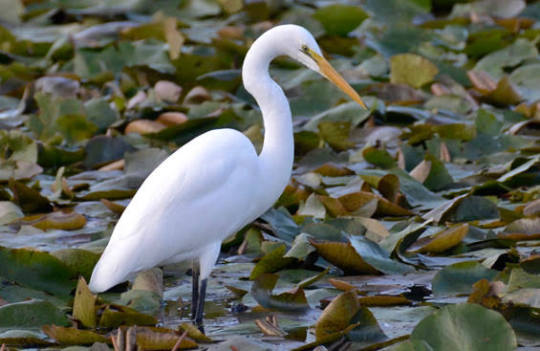
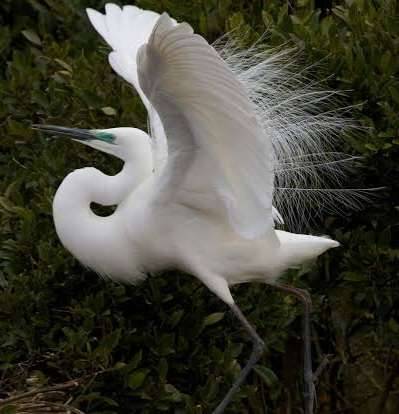

[Image description: four photos of a white bird with long legs and a long neck.]
This is a kōtuku, and it's incredibly sacred to my people. It's also known as the white heron. It lives in many countries, but in Aotearoa the population is very small - only about 200.
Kōtuku are beautiful and graceful creatures. They're such a pure white that in sunlight they seem to be a source of light themselves, glowing and radiant.
We hold them in high esteem because of both their beauty and rarity. There's a Māori saying, he kōtuku rerenga tahi, which means the kōtuku flies once. It's a reference to the fact that a kōtuku in flight is so rare that you only see it once in your life, but it's also used to describe something extremely beautiful/esteemed and extremely rare.
Kōtuku are beings from the spirit world. They exist in-between. An old Ngāti Pikiao funeral lament ends to kōtuku to tapui, e tama e (the kōtuku is now thy sole companion, oh my son). I was told once that they accompany our spirits after death when we travel to the northernmost cliffs of Aotearoa (Te Rerenga Wairua, the Leaping Place of Spirits) to jump from the cliffs to the sea and journey to Hawaiki.
Elwing as a bird that dwells between this world and the spirit world. Elwing as the bird that rerenga tahi, which means flies once but also means leaps [from a high place] once. Elwing, grand-daughter of Luthien, as the most beautiful and rare of birds, the kind that you only see once in a lifetime.
Bonus: Elwing and her twin chicks.

[Image: a kōtuku standing over a nest with two fluffy chicks inside. The adult kōtuku is beautiful and the chicks look like they've been dragged through a hedge backwards.]
(Btw comments and questions are welcome but please don't be weird in the notes - like I said, this bird is sacred.)
211 notes
·
View notes